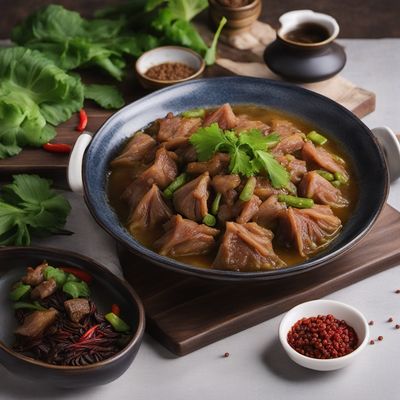
Ingredient
Chinese cabbages
The Versatile Leafy Delight
Chinese cabbages are characterized by their oblong shape, pale green leaves, and crisp texture. They have a mild, slightly sweet flavor with a hint of nuttiness, making them a versatile ingredient in stir-fries, soups, and salads. The leaves are tender and can be eaten raw or cooked, while the crunchy stalks add a refreshing element to dishes.
Origins and history
Chinese cabbages originated in China over 1,500 years ago and have since become a popular vegetable in Asian cuisine. They are widely cultivated in China, Korea, and Japan, where they are used in traditional dishes like kimchi and hot pot. Chinese cabbages were introduced to the Western world in the 19th century and have gained popularity for their versatility and nutritional value.
Nutritional information
Chinese cabbages are low in calories and rich in vitamins A, C, and K. They also provide dietary fiber and small amounts of calcium and iron.
Allergens
Chinese cabbages are generally safe to consume, but individuals with a known allergy to cruciferous vegetables should exercise caution.
How to select
When selecting Chinese cabbages, look for firm heads with crisp, unblemished leaves. Avoid cabbages with wilted or yellowing leaves, as they indicate age or poor quality. The heads should feel heavy for their size, indicating freshness. Additionally, check for any signs of pests or damage on the leaves.
Storage recommendations
To maintain the freshness of Chinese cabbages, store them in a perforated plastic bag in the refrigerator's crisper drawer. They can stay fresh for up to two weeks. Avoid washing the cabbages before storing, as moisture can promote spoilage.
How to produce
Chinese cabbages can be easily grown in a home garden or container. They prefer cool weather and well-drained soil. Sow the seeds directly in the ground or start them indoors and transplant the seedlings once they are a few inches tall. Provide regular watering and protect the plants from extreme heat or cold.
Preparation tips
Chinese cabbages can be used in a variety of dishes, including stir-fries, soups, salads, and kimchi. They can be enjoyed raw in salads or slaws, or cooked in stir-fries, soups, or stews. The leaves can also be used as a wrapper for dumplings or spring rolls.
Culinary uses
Chinese cabbages are commonly used in Asian cuisines, particularly in Chinese, Korean, and Japanese dishes. They are a key ingredient in dishes like kimchi, hot pot, and stir-fried noodles. Chinese cabbages are also popular in Western cuisines, where they are used in salads, coleslaws, and as a substitute for lettuce in sandwiches.
Availability
China, Korea, Japan

